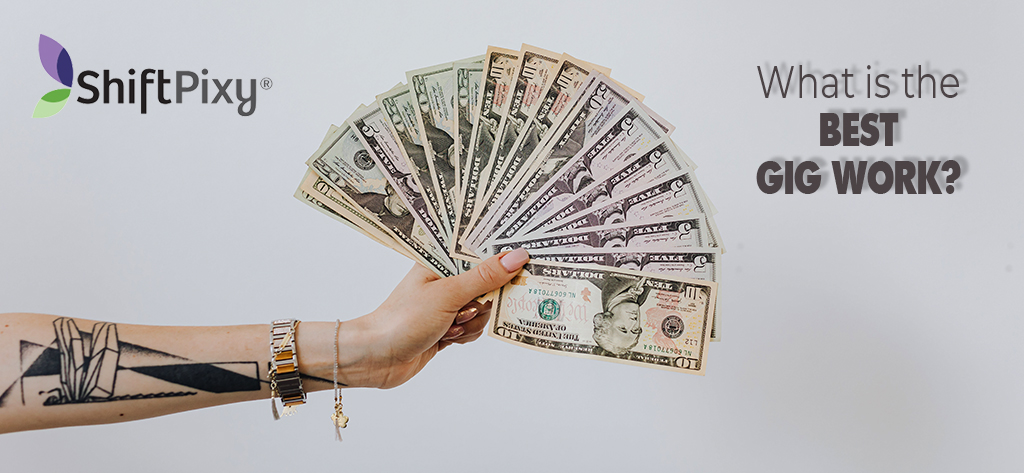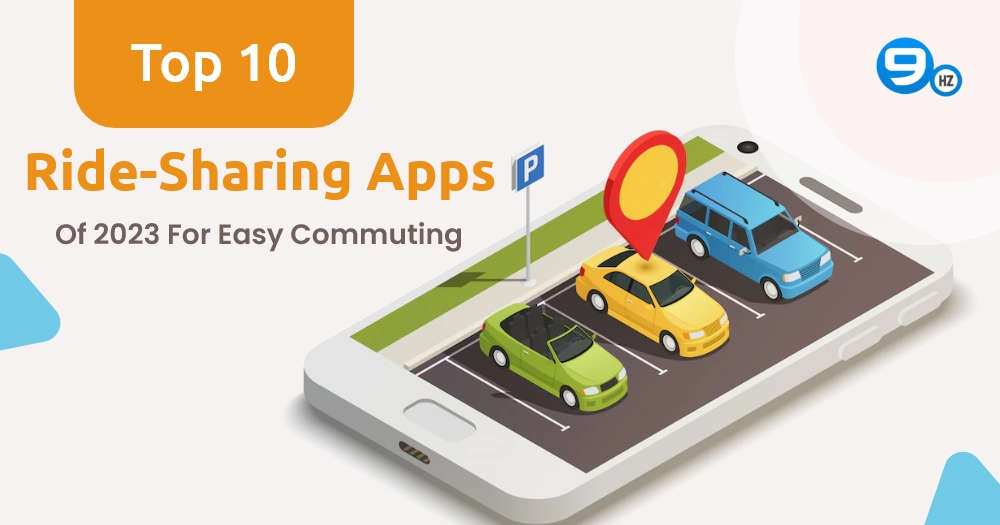Breaking into the Gig Economy: What You Need to Know
The gig economy has revolutionized the way people work, offering flexible earning opportunities and a chance to monetize skills and interests. With the rise of gig apps, it’s easier than ever to join the gig economy and start earning money on your own terms. But what exactly is the gig economy, and how can you get started?
The gig economy is a labor market characterized by short-term, flexible work arrangements. Instead of traditional full-time employment, gig workers engage in freelance, contract, or project-based work. This shift towards flexible work arrangements has been driven by the proliferation of gig apps, which connect workers with clients and customers.
Gig apps provide a platform for workers to offer their skills and services, from freelance writing and design to ride-sharing and delivery. These apps often handle tasks such as payment processing, customer support, and marketing, making it easier for workers to focus on their craft. With the gig economy, workers can choose when and how much they want to work, allowing for greater flexibility and autonomy.
So, what are the benefits of using gig apps? For one, they offer a low barrier to entry, allowing anyone with a smartphone and an internet connection to start working. Gig apps also provide access to a global market, enabling workers to reach clients and customers from all over the world. Additionally, gig apps often offer competitive pay rates and flexible payment structures, making it easier for workers to earn a living.
When searching for the best gig apps, it’s essential to consider factors such as app fees, payment structures, and user reviews. Some popular gig apps, such as Upwork and Fiverr, offer a range of freelance services, while others, like Uber and Lyft, focus on ride-sharing and delivery. By understanding the different types of gig apps and their features, workers can make informed decisions about which platforms to use.
Whether you’re looking to supplement your income or start a new career, the gig economy offers a wealth of opportunities. With the right skills, attitude, and knowledge, anyone can succeed in the gig economy. So, what are the best gig apps for you? Let’s explore some popular options and find out.
How to Choose the Right Gig App for Your Skills and Interests
With the numerous gig apps available, selecting the right one can be overwhelming. To maximize your earning potential, it’s essential to choose a gig app that aligns with your skills, interests, and lifestyle. Here are some tips to help you make an informed decision.
First, consider the type of work you want to do. Are you looking for freelance writing or design work? Or perhaps you’re interested in ride-sharing or delivery? Different gig apps cater to various types of work, so it’s crucial to choose one that matches your skills and interests.
Next, research the app’s fees and payment structures. Some gig apps charge commission fees, while others offer flat rates or hourly pay. Understand how you’ll be paid and what fees you’ll incur to ensure you’re earning a fair income.
User reviews are also an excellent way to gauge a gig app’s reputation and effectiveness. Look for reviews from other users to get an idea of the app’s strengths and weaknesses. Pay attention to feedback on payment, customer support, and overall user experience.
Another critical factor to consider is the app’s requirements and qualifications. Some gig apps require specific skills or certifications, while others may have age or location restrictions. Make sure you meet the app’s requirements before signing up.
Finally, consider the app’s user interface and features. Is the app easy to navigate? Are there features that help you manage your work, such as scheduling tools or messaging systems? A user-friendly app can make a significant difference in your overall experience.
By considering these factors, you can choose a gig app that aligns with your needs and goals. Remember, the best gig app for you will depend on your unique skills, interests, and lifestyle. Take the time to research and compare different options to find the one that works best for you.
When searching for the best gig apps, it’s essential to ask yourself, “What are the best gig apps for my skills and interests?” By considering your strengths, weaknesses, and goals, you can find a gig app that helps you maximize your earning potential and achieve success in the gig economy.
Top Gig Apps for Freelance Work: A Review of Popular Options
Freelance work has become increasingly popular in the gig economy, with many professionals turning to gig apps to find flexible and lucrative work opportunities. In this section, we’ll review some of the top gig apps for freelance work, including Upwork, Fiverr, and Freelancer.
Upwork is one of the largest freelance marketplaces, with over 12 million registered freelancers and 5 million clients. The platform offers a range of freelance services, including writing, design, programming, and consulting. Upwork’s features include a user-friendly interface, a robust search function, and a secure payment system.
Fiverr is another popular freelance platform that allows professionals to offer their services starting at $5 per gig. The platform is known for its creative and innovative approach to freelance work, with many professionals offering unique and specialized services. Fiverr’s features include a user-friendly interface, a wide range of categories, and a secure payment system.
Freelancer is a freelance marketplace that allows professionals to compete for projects in a range of categories, including design, writing, and programming. The platform offers a range of features, including a user-friendly interface, a robust search function, and a secure payment system.
When searching for the best gig apps for freelance work, it’s essential to consider factors such as fees, payment structures, and user reviews. Upwork, Fiverr, and Freelancer are all popular options, but it’s crucial to research and compare different platforms to find the one that best suits your needs.
Success stories from users of these platforms are numerous, with many professionals earning a full-time income through freelance work. For example, a freelance writer on Upwork reported earning over $100,000 per year, while a graphic designer on Fiverr reported earning over $50,000 per year.
When choosing a gig app for freelance work, it’s essential to consider your skills, interests, and lifestyle. By selecting a platform that aligns with your strengths and goals, you can maximize your earning potential and achieve success in the gig economy.
So, what are the best gig apps for freelance work? The answer depends on your unique needs and goals. By researching and comparing different platforms, you can find the one that works best for you and start earning money in the gig economy.
Ride-Sharing and Delivery Apps: A Look at the Best Options
Ride-sharing and delivery apps have become increasingly popular in the gig economy, offering flexible earning opportunities for drivers and delivery personnel. In this section, we’ll examine the top ride-sharing and delivery apps, including Uber, Lyft, DoorDash, and Postmates.
Uber is one of the most popular ride-sharing apps, with over 3 million drivers worldwide. The app offers a range of features, including a user-friendly interface, a robust search function, and a secure payment system. Uber’s requirements include a valid driver’s license, a reliable vehicle, and a smartphone.
Lyft is another popular ride-sharing app, with over 2 million drivers in the United States. The app offers a range of features, including a user-friendly interface, a robust search function, and a secure payment system. Lyft’s requirements include a valid driver’s license, a reliable vehicle, and a smartphone.
DoorDash is a popular food delivery app, with over 1 million drivers in the United States. The app offers a range of features, including a user-friendly interface, a robust search function, and a secure payment system. DoorDash’s requirements include a valid driver’s license, a reliable vehicle, and a smartphone.
Postmates is a popular delivery app, with over 500,000 drivers in the United States. The app offers a range of features, including a user-friendly interface, a robust search function, and a secure payment system. Postmates’ requirements include a valid driver’s license, a reliable vehicle, and a smartphone.
When searching for the best ride-sharing and delivery apps, it’s essential to consider factors such as pay structures, user reviews, and requirements. Uber, Lyft, DoorDash, and Postmates are all popular options, but it’s crucial to research and compare different platforms to find the one that best suits your needs.
Success stories from drivers and delivery personnel on these platforms are numerous, with many earning a full-time income through ride-sharing and delivery work. For example, a driver on Uber reported earning over $50,000 per year, while a delivery personnel on DoorDash reported earning over $30,000 per year.
When choosing a ride-sharing or delivery app, it’s essential to consider your skills, interests, and lifestyle. By selecting a platform that aligns with your strengths and goals, you can maximize your earning potential and achieve success in the gig economy.
So, what are the best ride-sharing and delivery apps for you? The answer depends on your unique needs and goals. By researching and comparing different platforms, you can find the one that works best for you and start earning money in the gig economy.
Selling Products Online: The Best Gig Apps for E-commerce
Selling products online has become a popular way to earn money in the gig economy. With the rise of e-commerce, many gig apps have emerged to connect buyers and sellers. In this section, we’ll discuss the best gig apps for selling products online, including eBay, Poshmark, and Depop.
eBay is one of the largest online marketplaces, with over 183 million active buyers. The platform allows sellers to list their products in various categories, including electronics, fashion, and home goods. eBay’s features include a user-friendly interface, a robust search function, and a secure payment system.
Poshmark is a social commerce platform that allows users to buy and sell gently used clothing and accessories. The app has over 5 million active users and offers a range of features, including a user-friendly interface, a robust search function, and a secure payment system.
Depop is a social marketplace that allows users to buy and sell a wide range of products, including clothing, accessories, and electronics. The app has over 15 million active users and offers a range of features, including a user-friendly interface, a robust search function, and a secure payment system.
When selling products online, it’s essential to consider factors such as fees, payment structures, and user reviews. eBay, Poshmark, and Depop are all popular options, but it’s crucial to research and compare different platforms to find the one that best suits your needs.
Success stories from sellers on these platforms are numerous, with many earning a full-time income through online sales. For example, a seller on eBay reported earning over $100,000 per year, while a seller on Poshmark reported earning over $50,000 per year.
To get started with selling products online, it’s essential to have a clear understanding of your target market, your products, and your pricing strategy. You should also have high-quality product photos and detailed product descriptions to showcase your products.
Tips for success on these platforms include optimizing your product listings, providing excellent customer service, and utilizing social media to promote your products. By following these tips and using the right gig app, you can maximize your earnings and achieve success in the gig economy.
So, what are the best gig apps for selling products online? The answer depends on your unique needs and goals. By researching and comparing different platforms, you can find the one that works best for you and start earning money in the gig economy.
Task-Based Gig Apps: A Review of Platforms like TaskRabbit and Amazon’s Mechanical Turk
Task-based gig apps have become increasingly popular in the gig economy, offering flexible earning opportunities for individuals who want to complete small tasks or jobs. In this section, we’ll review task-based gig apps, such as TaskRabbit and Amazon’s Mechanical Turk, and discuss their features, pay structures, and user experiences.
TaskRabbit is a task-based gig app that connects individuals who need help with errands, tasks, and jobs with people who are willing to complete them. The app offers a range of features, including a user-friendly interface, a robust search function, and a secure payment system. TaskRabbit’s pay structure is based on the type of task and the individual’s level of expertise.
Amazon’s Mechanical Turk is a crowdsourcing platform that allows individuals to complete small tasks or jobs, known as HITs, for a fee. The platform offers a range of features, including a user-friendly interface, a robust search function, and a secure payment system. Amazon’s Mechanical Turk’s pay structure is based on the type of task and the individual’s level of expertise.
When using task-based gig apps, it’s essential to consider factors such as pay structures, user reviews, and the type of tasks available. TaskRabbit and Amazon’s Mechanical Turk are both popular options, but it’s crucial to research and compare different platforms to find the one that best suits your needs.
Success stories from users of these platforms are numerous, with many individuals earning extra money by completing tasks or jobs. For example, a user on TaskRabbit reported earning over $1,000 per month by completing tasks, while a user on Amazon’s Mechanical Turk reported earning over $500 per month by completing HITs.
To get started with task-based gig apps, it’s essential to have a clear understanding of the platform’s features, pay structures, and user experiences. You should also have a strong profile and a good understanding of the types of tasks or jobs available.
Tips for success on these platforms include optimizing your profile, providing excellent customer service, and being proactive in seeking out tasks or jobs. By following these tips and using the right task-based gig app, you can maximize your earnings and achieve success in the gig economy.
So, what are the best task-based gig apps for you? The answer depends on your unique needs and goals. By researching and comparing different platforms, you can find the one that works best for you and start earning money in the gig economy.
Tips for Success: How to Maximize Your Earnings on Gig Apps
To maximize your earnings on gig apps, it’s essential to have a clear understanding of the platform’s features, pay structures, and user experiences. Here are some tips and strategies for success:
Optimize your profile: Your profile is often the first impression you make on potential clients or customers. Make sure it’s complete, up-to-date, and showcases your skills and expertise.
Manage your time effectively: Gig apps often require you to work on a flexible schedule. Make sure you’re able to manage your time effectively and meet deadlines.
Provide excellent customer service: Providing excellent customer service is crucial for building a strong reputation and attracting repeat business. Make sure you’re responsive to client or customer needs and provide high-quality work.
Be proactive: Don’t wait for opportunities to come to you – create your own. Be proactive in seeking out new clients or customers, and be willing to take on new challenges.
Stay organized: Gig apps often require you to juggle multiple projects or tasks at once. Make sure you’re staying organized and able to keep track of your work.
Continuously improve: The gig economy is constantly evolving, and it’s essential to stay up-to-date with the latest trends and best practices. Continuously improve your skills and knowledge to stay ahead of the competition.
By following these tips and strategies, you can maximize your earnings on gig apps and achieve success in the gig economy. Remember to always be flexible, adaptable, and willing to learn and improve.
So, what are the best gig apps for you? The answer depends on your unique needs and goals. By researching and comparing different platforms, you can find the one that works best for you and start earning money in the gig economy.
Remember, the key to success in the gig economy is to be proactive, flexible, and willing to learn and improve. By following these tips and strategies, you can maximize your earnings and achieve your goals.
Conclusion: Finding the Best Gig App for Your Needs
In conclusion, the gig economy has opened up a world of opportunities for individuals to earn money on their own terms. With so many gig apps available, it can be overwhelming to choose the right one. However, by considering factors such as app fees, payment structures, and user reviews, you can find the best gig app for your needs.
Whether you’re looking to freelance, ride-share, sell products online, or complete tasks, there’s a gig app out there for you. By following the tips and strategies outlined in this article, you can maximize your earnings and achieve success in the gig economy.
Remember, the key to success in the gig economy is to be flexible, adaptable, and willing to learn and improve. By staying up-to-date with the latest trends and best practices, you can stay ahead of the competition and achieve your goals.
So, what are the best gig apps for you? The answer depends on your unique needs and goals. By researching and comparing different platforms, you can find the one that works best for you and start earning money in the gig economy.
Don’t be afraid to explore different options and try out new gig apps. With the right mindset and strategy, you can achieve success and earn a good income in the gig economy.
In the end, the gig economy is all about flexibility, freedom, and opportunity. By embracing these values and finding the right gig app for your needs, you can unlock your earning potential and achieve your goals.


.jpg)


